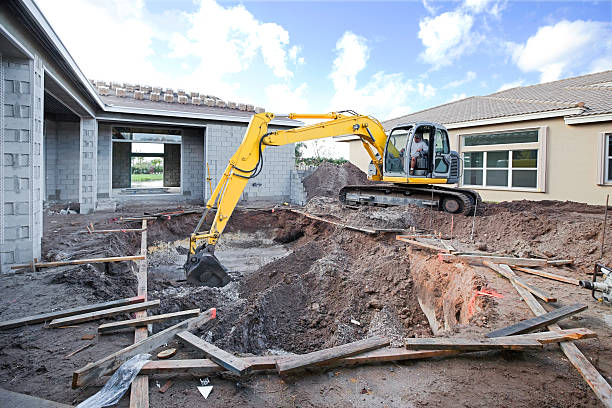Preparing your property for pool demolition involves several essential steps to ensure a smooth process.
Securing the necessary permits from local authorities is critical for regulatory compliance.
Additionally, disconnecting utilities such as electricity and water is crucial for safety reasons. Beyond these initial tasks, planning for debris management after the pool is removed is vital.
As you navigate these preparations, it’s also essential to consider the long-term impact on your property and your next steps moving forward.
Obtain Necessary Permits
Securing the necessary permits is the crucial first step in any pool demolition project.
Check Local Regulations
- Contact your local building department or municipal office to inquire about specific permit requirements.
- Familiarize yourself with any zoning regulations or restrictions that may apply.
Submit a Permit Application
- Complete the permit application form, providing accurate and detailed information:
- Size of the pool
- Location of the pool
- Intended demolition method
- Submit any required plans or drawings with the application.
Comply with Environmental Regulations
- Investigate potential environmental concerns, such as the presence of asbestos or lead in pool materials.
- Determine if an environmental impact assessment is required.
- Ensure compliance with all applicable environmental regulations.
Await Approval
- Allow sufficient time for the permit application to be processed.
- Do not commence any demolition work until you have received written approval from the relevant authorities.
By diligently obtaining all necessary permits, you ensure compliance with local laws and set a strong foundation for a smooth and successful pool demolition project.
Disconnect Utilities
Before commencing any demolition work, it is crucial to disconnect all utilities that service the pool area. This essential step ensures safety for everyone involved and prevents potential hazards.
Disconnect Electricity:
- Turn off power: Begin by turning off the power to the pool’s electrical equipment at the main breaker.
- Ensure safety: This step is critical to prevent electrical shocks to workers during demolition.
Shut Off Water Supply:
- Turn off the water supply: Close the valve that supplies water to the pool.
- Drain the pool: Drain the pool completely, ensuring compliance with local regulations regarding water disposal.
Disconnect Gas Lines (if applicable):
- Contact your utility provider: If your pool has any gas-powered equipment (heaters, etc.), contact your local gas utility company to schedule a safe disconnection of the gas lines.
- Professional assistance: It is highly recommended to have a qualified professional handle gas line disconnections to avoid any safety hazards.
Mark Buried Lines:
- Locate and mark: After disconnecting utilities, carefully mark the locations of any buried lines (electricity, water, gas) to prevent accidental damage during the demolition process.
By diligently disconnecting all utilities, you create a safer environment for everyone involved and minimize the risk of accidents or damage during the pool demolition process.
Plan for Debris Removal
Efficient debris removal is crucial for a smooth and successful pool demolition project.
Assess Debris Volume and Type:
- Determine the volume of debris: Estimate the amount of concrete, tiles, metal, and other materials generated during the demolition process.
- Identify debris types: Categorize the different types of debris to determine the most appropriate disposal methods.
Choose Your Debris Removal Method:
- DIY Removal: If you choose to handle debris removal yourself:
- Ensure you have the necessary equipment, such as a truck or trailer.
- Wear appropriate safety gear, including gloves, eye protection, and sturdy footwear.
- Professional Junk Removal Services: Consider hiring a professional junk removal service, especially for larger projects. This can save you time, effort, and potential headaches.
Create a Debris Removal Timeline:
- Schedule immediate removal: Plan for debris removal immediately after demolition to avoid cluttering your property.
- Minimize disruption: Prompt removal minimizes safety hazards and prevents the attraction of pests.
Comply with Local Regulations:
- Research disposal guidelines: Familiarize yourself with local regulations regarding the disposal of construction waste.
- Ensure proper disposal: Dispose of debris responsibly and in accordance with all applicable regulations to avoid fines.
By carefully planning for debris removal, you can ensure a smooth and efficient pool demolition project while maintaining a safe and organized environment.
Preparing your property for pool demolition requires meticulous planning and attention to detail. Obtaining the necessary permits, disconnecting utilities, and planning for debris removal are crucial steps to ensure a safe and successful project.
By adhering to local regulations, prioritizing safety, and implementing a well-defined plan for debris management, you can minimize disruptions, avoid potential hazards, and pave the way for the next phase of your property’s transformation.
Remember to consider the long-term impact of the demolition on your property and plan accordingly.

